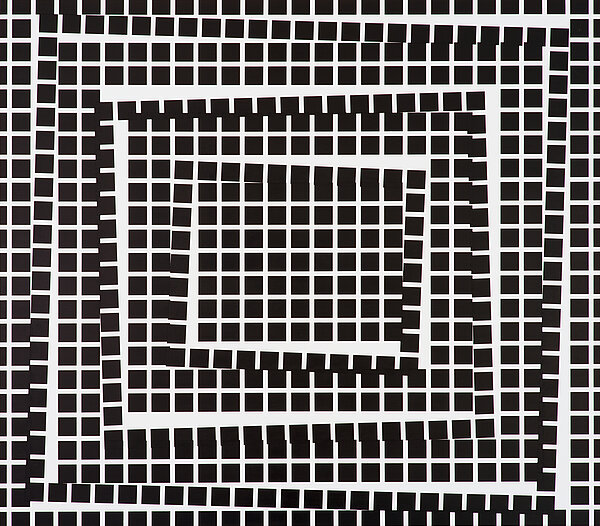Essential for Esther Stocker’s creative output is the conceptual interaction of system and chaos. “I need ... a system of order before I can actually depart from it”, as she explains. The French artist François Morellet has conveyed something similar in his typically humorous manner: “I love the rigour of geometry, but what I love even more is not to give a damn about it.” While Morellet exposes his self-imposed systems to the vagaries of chance, Stocker stages a carefully calculated deviation based on insights from the psychology of perception. She has been particularly influenced here by Gestalt psychology, which first developed in the German-speaking world during the early twentieth century.
Unlike Morellet, who in many cases allowed an underlying system to decide the visual outcome, the point of departure for Stocker’s works is the cognitive process of seeing. As is apparent from the present work from 2015, this enquiry takes her close to the issues that occupied Op Art. What is the relationship between foreground and background? Is what we initially see a white grid structure on a black background? Or do we tend to perceive black squares on a white background? At the same time, the longitudinal oblong of the canvas creates a tension to the square – the basic module of the composition. The grid-shape field has been tilted several times over and with that skewed out of the orthogonal picture axes: as a result, it has been divided up into a lot of stripes running at angles to one another. With this, the entire picture field seems to waver, thus creating an impression of space. If we look at the empty wedge-shaped areas and the picture margin that “crops” the picture grid, the white sections are more visually compelling. In this way Stocker stimulates and confounds the viewer’s visual processes and literally makes his or her own way of perceiving “plain to see”. (Susann Scholl)
Esther Stocker
1974 born in Silandro (IT)
Lives and works in Vienna


